There’s always been something about the idea of Art Therapy that drew me in. I’ve always had a passion for creative expression and believe, based on my own personal experience, that the very nature of creating a work of art carries with it rich therapeutic value. While in Colombia this past summer when I had the opportunity to organize a series of weekend activities with the foundation I was volunteering with, Fundamor, a home for children with HIV/AIDS, I knew that an art therapy activity would have to have a central role in my plans.
Fundamor, an NGO, started as a hospice for AIDS babies. It began when a two-month old orphaned baby, named Tatiana, arrived with a diagnosis of AIDS and a life expectancy of a few months. Miraculously, with the help of antiretroviral medications, good food and a clean, warm place to live, Tatiana’s T cell count rose. She is now 17 years old and has transferred to a centre for youth living with HIV in Bogotá where she is learning to live as an independent adult and looking at university programs in journalism. Since then, Fundamor has changed its structure from a hospice, where children come to spend the last days of their life, to a home that focuses on improving the quality of lives of HIV-positive children who will reach adulthood.
Fundamor, located on a beautiful piece of countryside outside of Bogotá, Colombia’s capital, is home to 27 children aged 1 to 17 years-old. The foundation provides clean, warm beds, nutritious meals, an education, healthcare and a tight-knit family for children infected with HIV. Most of the children’s families are either deceased or are living in extreme poverty and unable to give their child the quality of care that he or she requires. Despite the foundation´s efforts, the children are still impacted by the stigmatization, lack of self-confidence and social isolation that many people with HIV experience. They also experience the loneliness and the lack of autonomy that comes with living in a large group home, with sometimes only one or two adults on staff at a time.
My art therapy activity was simple; we cut out magazine pictures to create a collage that represented our dreams/visions/goals in life. This exercise seemed appropriate because of its ease and simplicity and the value I thought creating a visual plan for a future that most of these children, who take life a day at a time, often don’t realize that they have. Joe and I created our own beforehand, which served as a good exercise for ourselves, who are both in transitional periods of our lives. My collage still hangs in my house in Toronto and contains pictures of things that inspire me and remind myself of what is fundamentally important in my life.
That being said, doing activities with kids can be a challenge. The teenagers in the group weren’t interested in doing the activity at all and initially decided to mope on the sidelines until they caught the enthusiasm from the rest of the group and decided to give the activity a try. The very young children and the children with disabilities needed help with cutting, pasting and choosing pictures for their collage. However, no matter what age or ability level, we found that the activity was enjoyable and insightful for everyone. Each child was able to complete a collage that he or she was proud of.
Creating a work of art is a highly individualized process, and promotes self reflection, expression and mindfulness, all at once. The activity serves as an opportunity for the kids to begin to contemplate topics that they had never before been asked to investigate; such as their inspiration for living, their dreams for the future and what defines each of them as individuals. One adolescent, Rocio, who I had previously seen as a girl mainly concerned with materialistic things (hair, make-up, Reggaeton), created a collage full of pictures of the Amazon, animals and nature. I realized that she was hiding a deep and interesting personality behind the one that she portrayed to the rest of the world.
The experience showed me that art therapy doesn’t need to be complicated in order to have a psychological impact. Through this simple, inexpensive activity, which I recommend you do yourself. The kids at Fundamor were able to prove to themselves that they are worthy of a full, happy life and a bright future, despite their diagnosis.

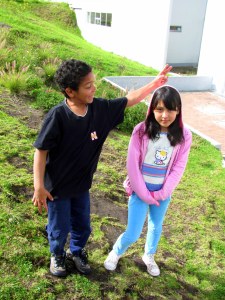

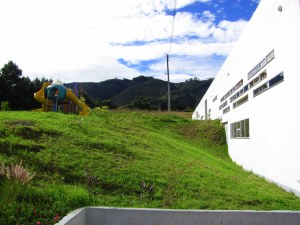

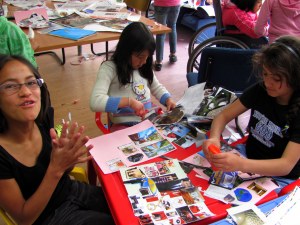
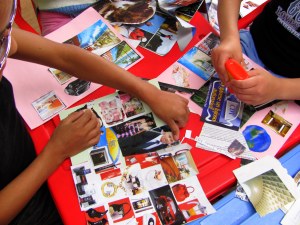


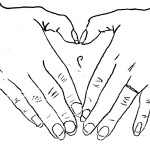





Que linda experiencia Talita! Gracias por invitarme.
Si, esas experiencias que tuvimos en Colombia eses dos meses, siempre se quedarán en un lugar muy especial en mi corazon. Además las fotos me acuerdan de unos niños muy lindos y especiales.